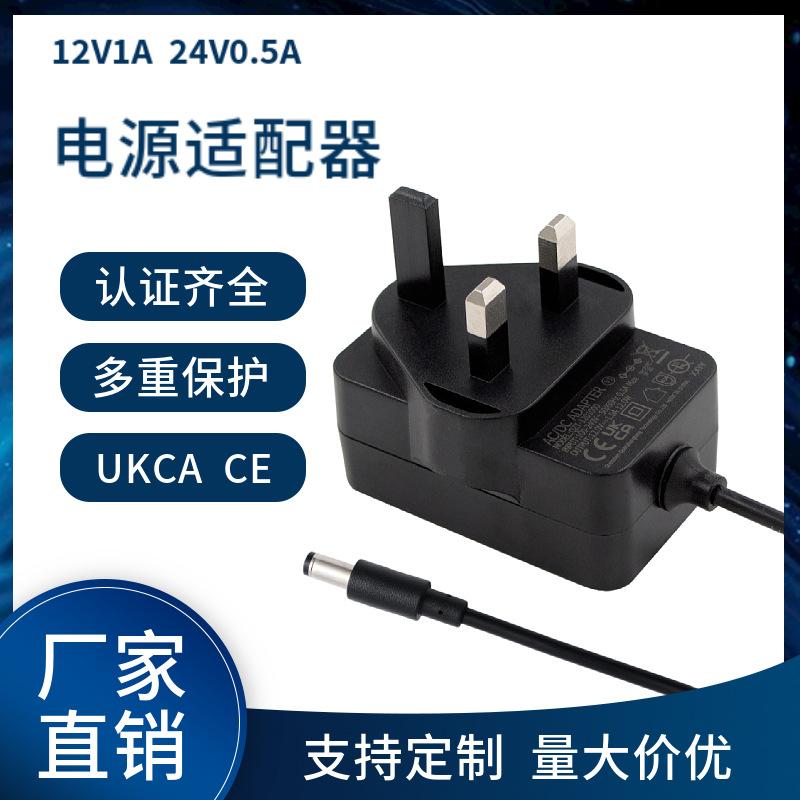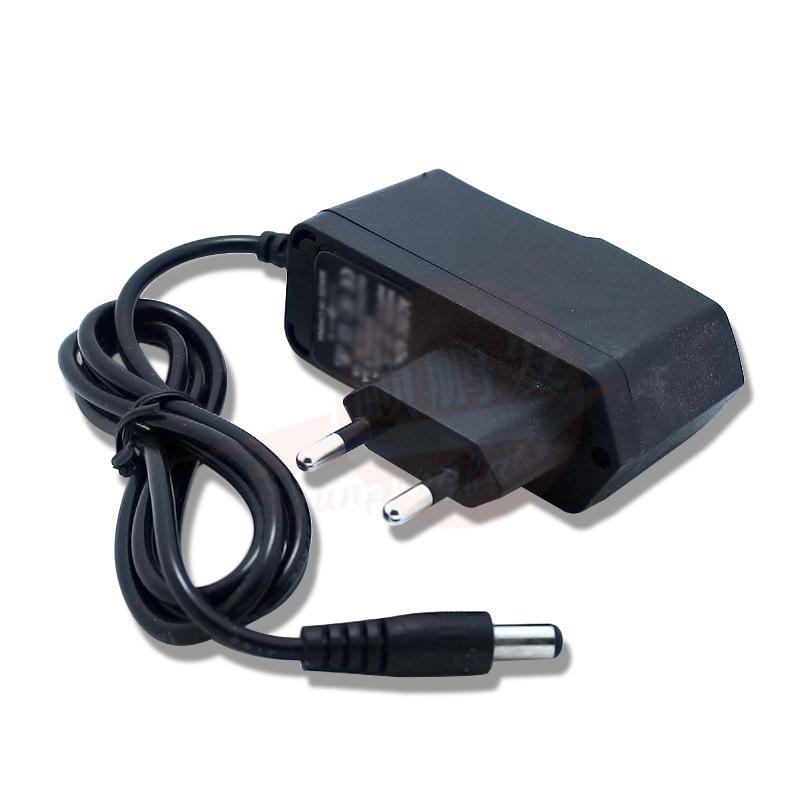This article explains the differences between a 2-pin plug adapter and a 3-pin plug adapter, as well as their functions and features.
What is a 2-pin plug adapter?
A 2-pin plug adapter is a simple device used to connect electrical devices to power outlets that have two holes. These adapters typically consist of two prongs that match the configuration of the outlet's slots. They are commonly used for small electronic devices like mobile phone chargers, laptops, cameras, and other low-power gadgets.
Two-pin plug adapters are often used in regions where the electrical infrastructure is designed with two-pin sockets, such as parts of Europe and Asia. They are convenient for travelers who may need to charge their electronic devices using outlets that have a different configuration from what they are used to in their home country. However, it's essential to ensure compatibility with the voltage and frequency of the electrical system to avoid damage to devices.
What is a 3-pin plug adapter?
A 3-pin plug adapter is designed to connect electrical devices to power outlets that have three holes. These adapters typically consist of three prongs that match the configuration of the outlet's slots.
The third pin in a 3-pin plug adapter is usually longer and thicker than the other two. This pin is for grounding purposes. Grounding helps to protect against electric shocks and ensures the safety of the user, especially for devices that have metal casings or are prone to electrical faults.
3-pin plug adapters are commonly used for larger appliances and electronics like refrigerators, washing machines, computers, and other high-power devices. They are standard in many regions, including the United States, Canada, and parts of Europe.
When using a 3-pin plug adapter, it's important to make sure that the outlet you are connecting to is properly grounded to ensure the safety and functionality of your devices.
What is the difference between a 2-pin and a 3-pin plug adapter?
A 2-pin plug adapter has two prongs, while a 3-pin adapter has three. The main difference is grounding functionality.
Two-pin adapters are simpler and used for small electronic devices, like mobile phones and laptops. Three-pin adapters, with a longer, thicker third pin, are used for larger appliances and electronics, such as refrigerators and washing machines. These adapters provide additional safety through grounding, which is important for certain appliances, while two-pin adapters are simpler and used for devices that do not require grounding.
Here are their differences in detail.
| Feature | 2-pin plug adapter | 3-pin plug adapter |
|---|---|---|
| Number of pins | Two (Live and Neutral) | Three (Live, Neutral, and Earth). The earth pin is usually longer and thicker. |
| Grounding | No grounding feature | Includes an earth pin for grounding |
| Safety | Moderate safety; suitable for low-power devices. Adequate for double-insulated appliances that do not pose a risk of electric shock. | High safety due to grounding; ideal for high-power appliances. It provides enhanced safety through grounding, which helps prevent electric shocks, especially in devices with metal casings or those that draw significant power. |
| Applications | Used for small low-power electronics (e.g., mobile phone chargers, lamps, electric razors, and small kitchen appliances) | Used for larger appliances (e.g., refrigerators, washing machines) |
| Durability | Generally less robust | More robust and durable |
| Cost | Typically cheaper | Slightly more expensive |
Features of a 3-pin plug adapter
A 3-pin plug adapter allows connecting devices with a 3-prong power cord to outlets with different plug types, but it's important to consider power ratings, grounding, and voltage compatibility for safe usage, especially with high-wattage appliances.
Types and Uses
- 3-pin plug adapters have a 3-pin male plug on one end that inserts into the device's power cord, and a different plug configuration on the other end to fit the outlet.
- Common types convert a 3-pin plug to a 2-pin outlet (e.g. European to US), or vice versa.
- Travel adapters often have multiple plug configurations to work in different countries.
- They allow using devices with a 3-prong power cord in outlets with a different plug configuration, essential for international travel or using imported electronics.
Power Ratings
- Basic 3-pin plug adapters are inexpensive, costing just a few dollars.
- Higher-wattage adapters rated for 10-15 amps are available for larger appliances like hair dryers.
- The maximum wattage is around 3000 watts or 13 amps, as standard household sockets are rated for a maximum of 13 amps.
Safety Considerations
- Some models incorporate a grounding pin or connection for safety with grounded 3-pin outlets.
- They do not convert voltage, so a separate converter may be needed for incompatible voltages.
- Using high-drain devices like electric vehicles through a 3-pin adapter risks overloading and overheating the socket, cables, and adapter.
Features of a 2-pin plug adapter
Here are the features of a 2-pin plug adapter:
-
Two Pins (Live and Neutral)
It has two metal pins: one for the live wire and one for the neutral wire, but it has no earth (ground) pin, making it suitable for devices that don’t require grounding.
-
Compact Design
It's small and lightweight, ideal for travel or use with low-power devices like phone chargers, shavers, or radios.
-
Universal Compatibility (in some cases)
Some 2-pin adapters are designed to accept plugs from multiple countries or plug types (e.g., Europlug to US plug).
-
Voltage & Current Rating
Typically rated for 110–240V and up to 6A or 10A, depending on the model and use case.
-
Insulated Pins (on modern adapters)
Ends of pins may be partially insulated for extra safety during insertion/removal.
-
Material & Build Quality
Made from heat-resistant plastic with metal conductors, ensuring safety and durability.
-
No Earth Connection
Not suitable for high-powered or metal-bodied appliances that require grounding.
-
Polarization (in some regions)
Some 2-pin plugs have one pin slightly larger, ensuring correct insertion (mainly in North America).
What devices are compatible with a 2-pin plug adapter?
Devices that are compatible with a 2-pin plug adapter are typically low-power, double-insulated appliances or electronics that do not require a ground connection for safe operation. Some examples include:
- Older game consoles like Atari, Intellivision, TurboGrafx-16, etc.
- Certain portable electronics or battery-operated devices with a 2-prong AC adapter.
- Small appliances like lamps, fans, radios without metal housings.
- Double-insulated power tools or devices with plastic casings.
2-pin plug adapters allow connecting these devices to a power source by converting the plug type, but they do not provide an equipment grounding path. As such, they should not be used with devices that have metal housings or components that could become energized and pose a shock hazard if not properly grounded.
Devices that require a ground connection for safety, such as larger appliances, power tools with metal casings, computers, TVs, and other electronics with exposed metal parts, are not compatible with 2-pin adapters. These devices should be plugged into a 3-prong grounded outlet using their original 3-prong plug or a properly grounded adapter.
It's important to note that while 2-pin adapters can be convenient for certain applications, they compromise safety by eliminating the ground path. Their use should be limited to double-insulated devices that don't require grounding, and they should never be used as a permanent solution for grounding-dependent equipment.
Which countries use a 2-pin plug?
These following countries primarily use 2-pin plugs, some may also use other plug types for specific applications or have hybrid sockets that accept multiple plug types. Additionally, the presence of a grounding pin or lack thereof on 2-pin plugs can vary across countries.
- All countries of Europe except the United Kingdom, Ireland, Cyprus and Malta use the Type C 2-pin plug. This includes most of continental Europe, Russia, and much of Asia outside China.
- China, Argentina, Australia, and New Zealand use the Type I 2-pin plug. The Type I plug has two flat pins in a V-shape, and can also have a third grounding pin.
- Thailand uses the Type C 2-pin plug along with Type O.
- Brazil uses the Type N plug, which has two round pins along with an earth pin. The Type N socket is designed to work with the 2-pin Type C plugs as well.
- Italy uses the Type L 10 amp plug, which is compatible with the 2-pin Type C plug.
What devices and which countries use a 3-pin plug?
A 3-pin plug adapter typically refers to the Type G plug, commonly known as the British plug. Devices compatible with this plug adapter must support 220–240V voltage and 50Hz frequency (standard in the UK and many other regions), have a compatible plug shape or be used via an adapter, and be able to handle the UK-style fuse protection (often built into the plug).
These are some compatible devices:
- Laptops, phones, tablets (with appropriate chargers)
- Hairdryers, electric kettles, toasters (rated for 220–240V)
- Travel appliances with dual voltage
- Any universal power supply device (marked 100–240V, 50/60Hz)
Here are the countries that use a 3-pin plug.
| Countries that use a 3-pin plug | |
|---|---|
| United Kingdom | Standard plug type |
| Ireland | Same as UK |
| Malta | British standard |
| Cyprus | Uses UK-style plugs |
| Malaysia | Official plug type |
| Singapore | Official plug type |
| Hong Kong | British-style plugs common |
| United Arab Emirates | Widely used |
| Saudi Arabia | Common in many buildings |
| Bahrain | Commonly used |
| Oman | British plug standard |
| Qatar | Standard plug type |
| Nigeria | Common in many buildings |
| Kenya | Standard in modern installations |
| Ghana | British standard plug |
| Uganda | British-style plugs common |
Can you convert a 2-pin plug to a 3-pin plug?
You can convert a 2-pin plug to a 3-pin plug, but it depends on the device and safety considerations. The 2-pin plug typically lacks an earth (ground) connection, while the 3-pin plug has a live, neutral, and earth (ground) connection for safety. So it's acceptable to convert when:
- The device is double insulated (look for a symbol: a square inside another square).
- It does not require grounding for safe operation.
- You're using a proper adapter (like a travel adapter) or safely rewiring with the correct plug.
In this case, you can connect the Live wire (brown) to the Live pin, and connect the Neutral wire (blue) to the Neutral pin, then leave the Earth pin empty (no wire connected). But again, only if the device is double insulated. As a suggestion, you should clearly mark the Earth pin as ungrounded if applicable.
When the device requires grounding (e.g., metal-bodied appliances like microwaves, washing machines), it's not safe to convert a 2-pin plug to a 3-pin plug. Don't try to bypass the earth wire!








